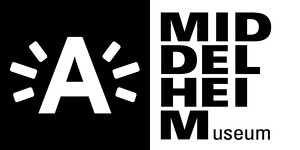June 1–September 23, 2018
Middelheimlaan 61
2020 Antwerp
Belgium
T +32 3 288 33 60
To mark the city festival “Antwerp Baroque 2018. Rubens inspires,” the Middelheim Museum has asked internationally renowned artists from different disciplines to present new or existing work inspired by the innovative ideas of baroque landscape architecture. Experience Traps is a collection of enormously diverse works at the interface between architecture, sculpture, installation and performance which will be set up in the Middelheim Museum and a number of city centre locations during the summer of 2018.
A seductive ode to the imagination
With Experience Traps, the Middelheim Museum highlights a contemporary legacy of baroque, focusing in particular on the tension between the natural and the artificial. Internationally renowned artists have been invited to present new or existing work at the interface between architecture, sculpture, installation and performance, based on the body of ideas that underpins baroque landscape architecture. This includes motifs such as the grotto, the labyrinth, the tableau vivant, the folly, botany, the fountain, the trompe l’oeil…
These constructions took centre stage in the heyday of baroque and rococo within landscape design of the aristocratic garden. The landowner arranged the garden so that a visit to it would become a must, by which the surprising experience created conversation and an opportunity for travel, meetings and gatherings. In addition to this, in the baroque era the botanical garden was strongly developed as a place where the exchange of knowledge and study were key.
In the garden of Rubens, we find traces of both garden plans: on the one hand a fascination for technological innovations in the form of automata and fountain installations, and on the other hand, the rare and exotic types of plants such as those printed by Cristoffel Plantijn in the Cruijdeboeck by Rembert Dodoens.
Although differing in principle (very exclusive or properly inclusive) a green space in both cases was reshaped into an environs controlled by human hand, used to convey a specific message to the visitors. A vantage point from the primacy of rationality and efficiency or just as an ode to freedom and imagination.
Today, these motives allow for whimsy, yet also a critical manner to observe “commissioned art” that plays with the location. It attempts—in the proper baroque tradition—to mystify the public, to surprise it, impress or seduce.
The park as a social space
The centuries-old park environment of the Middelheim Museum, its architecture and the development of the collection reflect this baroque theme of architectural and sculptural interventions that make the landscape and the encounters that take place in it more attractive. This is a significant bonus, as the Middelheim with its museum park today also functions as a social space.
Experience Traps lays stress on the activation of a physical and mental “self-experience” in the visitor, according to the precise specifications defined by the artists. Surprise elements, but also restrained, lucid sculptural interventions can be used both to put the viewer at his or her ease and as a disruptive factor. The exhibition is a critical reflection on our contemporary experience-centred society, in which we want to be entertained with unique experiences—preferably ones which we can share with as many people as possible.
The artists
William Forsythe (USA) is a contributing artist and co-curator. He will also incorporate some of his well-known “choreographic objects” in the project and thereby elicits a response for the viewer.
Other artists who will present new or existing work for the exhibition are Mike Bouchet (US), Marvin Gaye Chetwynd (UK), Jeremy Deller (UK), Spencer Finch (US), Gelitin (AUS), Ryoji Ikeda (JP), Bertrand Lavier (FRA), Louise Lawler (US), Bruce Nauman (US), Recetas Urbanas (ESP), Monika Sosnowska (PL), Adrien Tirtiaux (BE), Dennis Tyfus (BE), Andra Ursuta (RO) and Ulla von Brandenburg (D).



